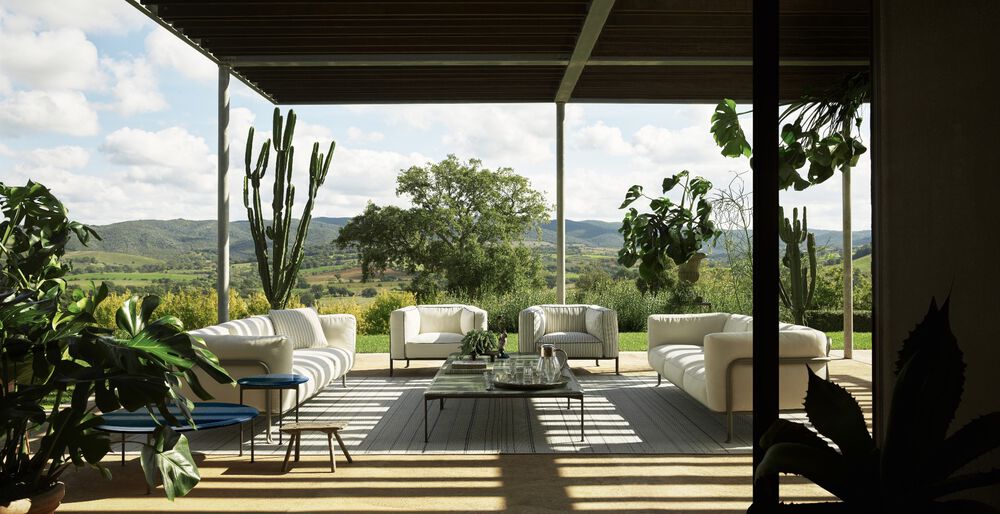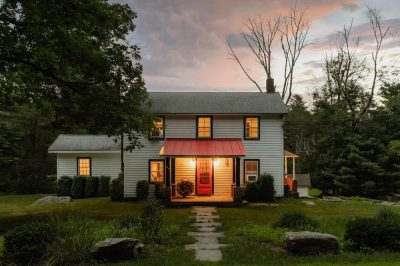Creating an outdoor space that feels like a sanctuary is the goal for many homeowners. With careful planning and design, you can transform your garden into a personal oasis that beckons you to spend time outdoors. Follow these tips to design a gorgeous garden that you’ll never want to leave.

Choose Comfortable Outdoor Furniture
Quality outdoor furniture is essential for creating a comfortable and inviting garden. Select pieces made with weather-resistant materials like teak, wicker or aluminum that can stand up to the elements. Comfortable cushions in cheerful colors or patterns add extra coziness.
For a touch of timeless glamour, consider the Allure O’ table and Flair O’ chair from Monica Armani’s luxury outdoor furniture collection. Inspired by Jackie O’s iconic style, the Allure O’ table features a gracefully shaped top that artfully combines straight lines and curved edges. Paired with the elegant Flair O’ dining chair, this set lends sophistication and charm to any garden.
When selecting outdoor furniture, opt for durable materials that can withstand sun, rain, and other weather conditions. Teak, aluminum, wrought iron, and synthetic wicker are excellent choices. Look for sturdy construction with quality hardware and materials. Weather-resistant cushions in fade-resistant fabrics increase comfort.
For versatility, choose pieces like loveseats, ottomans and side tables that can be arranged in different configurations. Dining sets and deep seating groups create an outdoor living room. Chaise lounges, hammocks and hanging chairs provide spots for reading or napping. Daybeds even allow overnight guests.
Incorporate Multifunctional Elements
Look for ways to get more use out of your garden by including multifunctional structures and décor. An arbor or pergola covered in vines provides shade and can support hanging chairs for lounging. Fire pits extend time outdoors into the evening. Container gardens offer flexibility to move plants as needed.
By planning spaces for dining, lounging, and entertainment, your garden becomes more than just a place to grow plants or vegetables. It transforms into an extension of your living space.
When designing your garden, look for elements that serve more than one purpose. An arbor or trellis could provide vertical interest, privacy screening, support for climbing plants, and a framework for hanging a swing or hammock chairs.
Water features like ponds or fountains add ambient sounds, encourage beneficial birds and insects, and provide drinking or wading spots for pets – all while also serving as lovely focal points.
Fire pits, fireplaces and outdoor heaters allow you to enjoy your garden longer into the evening and seasons like fall. Just be sure to check local regulations on open flames.
Movable planters give you flexibility to change the layout each year and move plants in and out of optimal lighting conditions. They can also help divide spaces or create borders.
Create Inviting Pathways and Destinations
Meandering garden pathways guide you through the space and create a sense of exploration. Using materials like flagstone, gravel, or brick, design pathways that curve organically or lead to secluded sitting areas tucked away like secret hideaways. Destinations located at various spots give you something to stroll to, like a fishpond, sculpture, or chimera.
Path lighting illuminates evening garden strolls. Consider lighting options like path lights at ground level or hanging lanterns to add ambiance after dark.
Garden paths should be wide enough for two people to comfortably walk side-by-side, at least 3-4 feet across. For stability underfoot, choose solid materials like stone, pavers, bricks or gravel. Use borders or edging to keep gravel paths contained.
Winding pathways feel more natural and intriguing, inviting you around the next bend. Straight paths also work well, especially flanked by flower beds or leading directly to a focal point like an arbor or statue.
Create delightful destinations within your garden that give you somewhere to wander to. These could include a reading nook with comfy chairs tucked under a tree, a pondside sitting area, raised beds for vegetable gardening, or an open lawn for games.
For seasonal interest, incorporate structures like arbors or pergolas covered in climbers like roses or clematis. Choose sturdy trellises and obelisks to display more delicate vines. Flowering shrubs also line pathways beautifully.
Choose Plantings for Multi-Season Interest
Select a variety of plants that provide color, texture and scents year-round. Evergreen shrubs, trees, and screens anchor the garden while flowerbeds that shift with the seasons offer changing vistas.
Plant bulbs like tulips and daffodils that bloom in spring. For summer, opt for bright flowering annuals in containers or beds. Leave space for hardy mums and ornamental kale that shine in autumn. Even in winter, bark, seed heads and evergreen foliage provide interest.
When selecting plants, consider their appearance across seasons to create year-round appeal. Foliage plants offer durable structure and background greenery. Flowering perennials, shrubs and vines supply seasonal blooms.
For spring, choose early bulbs like tulips, daffodils and hyacinths. Summer annuals like marigolds, zinnias, and begonias add vivid color through frost. Leave some beds open for fall mums, asters and ornamental kale.
Evergreens like pine, spruce, boxwood, cedar and holly maintain form during winter, accented by bare branches and seed heads. Berry-producing shrubs give winter appeal and bird food sources.
To maximize plant diversity, include a mix of annuals, perennials, bulbs, trees and shrubs. Repeat favorite themes like fragrant herbs or pollinator-friendly plants in key areas. This unity among variety creates an inviting habitat.
Add Personal Touches
Make your garden unique by incorporating personal touches that reflect your personality and interests. For a rustic flavor, display weathered garden tools or repurposed items. Sculptural accents like artistic trellises, animal topiaries or found-object art add quirky personality.
Repurposed items take on new life in the garden, whether it’s an antique wheelbarrow overflowing with flowers or an old bicycle cleverly transformed into a planter. Weathered garden tools hung on walls add nostalgic charm.
With mindful design choices and care, your garden becomes a treasured living space for making memories, relaxing and entertaining. Filled with life, personal touches and comforts, it’s a place you’ll want to spend time in every day.








